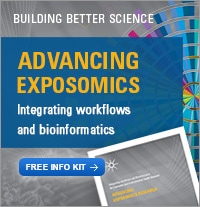Professor Paul Zimba
Over the course of his 40-year career, Paul Zimba has become something of a Renaissance researcher, developing skills in diverse fields, including taxonomy, physiology, and analytical chemistry—all in the service of protecting water quality and improving the health of both marine and fresh water ecosystems.
Perhaps the most exciting discovery he has made along the way (using Agilent instruments) is that a mysterious fish-killing algal toxin could be especially good at killing cancer cells.
The algae, Euglena sanguinea, was already well known; the toxin was new.
“We were alerted to this by a farm in North Carolina, where fish were dying off,” says Zimba, who was working for the U.S. Department of Agriculture in Mississippi at the time. “I looked at the samples they forwarded and thought, ‘This can’t be a Euglena. Everybody knows that Euglenas are benign.’ We put it in culture and sure enough it was killing things.”
Following standard practice, they dosed a tissue culture with the compound and watched for bioactivity.
“Tissue cultures are typically composed of cancer cells, often taken from either humans or rats, because cancer cells are easy to grow,” Zimba explains. “They basically will grow forever. They don’t go through some of the problems you have with normal cells of aging and not growing well in media.”
What Zimba observed surprised him.
“We were just looking for bioactivity, and from that we were able to suddenly notice that there was quite a gradient, if you will, with regard to attacks on the cancerous cells,” he says. “So we did LD50 testing and saw that there was a dose dependent response of the tissue culture to the toxin.”
“Work we are continuing to do involves animal testing, and those results are looking very promising in terms of this compound having some great anticancer properties,” Zimba says. “It’s neat when you find a problem and are able to work all the way through it, and that’s what I hope we will end up with. It would be nice to find a great use for a harmful algae.”
Zimba is now a professor of life sciences at Texas A&M University, Corpus Christi, where he also directs the Center for Coastal Studies. His home turf naturally includes Corpus Christi Bay on the Gulf of Mexico, but also the Nueces River that feeds into it.
His interests include harmful algae, algal toxins, aquatic ecosystems, wetlands, aquaculture, microalgal taxonomy and physiology, remote sensing, carbon fixation assessment, aquatic ecosystem stressors, and cyanobacteria.
“It’s always fun when you have a number of diverse projects that are all moving forward. It keeps you motivated,” he says. “In a number of cases, I have been in the right position to recognize a problem and suggest a solution that maybe I didn’t yet know how to do but was then able to build that expertise.”
Zimba notes that obtaining results that can be reproduced is vital in all areas of research—and he gets that by first using high-performance liquid chromatography to separate compounds and then confirming the results through mass spectrometry. The fractionation system is a huge help as well.
“One of the neat features with that is you, in effect, optimize things at the analytical level and you then just change out a column. When you tell the system to go to the larger size, everything is worked out for you in terms of being able to do separations on that larger scale,” Zimba says. “That scale-up factor is a huge one. The old way was you calculated the size of the tubing and all that and then you hoped you were right. This gets you out of those kinds of issues. As a result, reproducibility goes way up.”
Zimba’s diverse skills and interests have enabled him to enjoy a range of successes, from developing a way to prevent sodium adduct formation (which makes certain compounds hard to quantify) to identifying a new genus and species of toxin-producing algae.
“I had never described a genus or a species before, so that involved a lot of learning in order to do all the genetics, biochemistry, and the morphological work required under the current classification system. There was a lot of characterization to provide the most complete description of this new genus and species, including profiles of lipid and fatty acid, of chlorophyll and carotenoids, as well as discerning which of the known 48 classes of cyanotoxins were being produced by the culture. The project included SEM and TEM microscopy, then comparing to all other known species genetically,” Zimba says.
“It was an interesting task. I started off at a microscope and now 40 years later I’m still using the skills I learned back then, but of course complementing them with the analytical approaches that Agilent products offer, where we can provide more of an answer than we could years ago.”

Professor of Life Sciences and Director of the Center for Coastal Studies
Texas A&M University Corpus Christi
Corpus Christi, Texas
-
Mehrubeoglu M, Teng MY, Zimba PV. Resolving mixed algal species in hyperspectral images.
Sensors (Basel). 2013 Dec 19;14(1):1-21 -
Gutierrez DB, Rafalski A, Beauchesne K, Moeller PD, Triemer RE, Zimba PV. Quantitative mass spectrometric analysis and post-extraction stability assessment of the euglenoid toxin euglenophycin.
Toxins (Basel). 2013 Sep 18;5(9):1587-96. -
Brostoff W, Holmquist J, Schmidt-Gengenbach J, Zimba P. Fairy, tadpole, and clam shrimps (Branchiopoda) in seasonally inundated clay pans in the western Mojave Desert and effect on primary producers.
Saline Systems. 2010 Dec 8;6:11. doi: 10.1186/1746-1448-6-11.
For Research Use Only. Not for use in diagnostic procedures.
-

- Academia
- Omics Collaborators
- H. M. "Skip" Kingston
